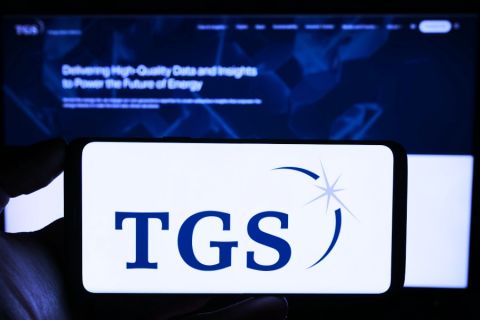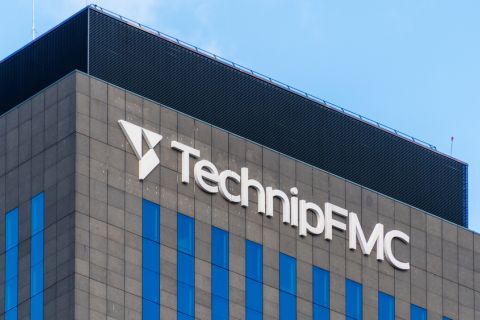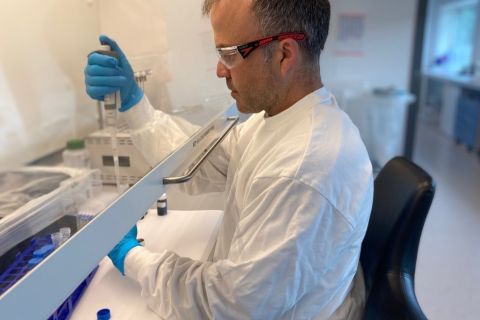Mariner Energy chief executive Scott Josey looks forward to running a soon-to-be-public company that has a transaction under way that will more than double its size. This past September, Mariner Energy Inc.'s chairman, chief executive and president Scott Josey had just signed an agreement to receive Denver-based Forest Oil Corp.'s Gulf of Mexico assets in exchange for Mariner stock in a creative transaction that would more than double Mariner's size, provide new growth opportunities, and be consummated with Mariner becoming a publicly traded company. The mood in the Mariner executive suite was not as optimistic just two years ago. The company's largest shareholder was Enron, and Josey was trying to run an exploration business in the midst of the world's second-largest bankruptcy. Mariner's credit facilities were not renewed and he found himself running an E&P company on cash alone. Private-equity investors Carlyle/Riverstone and Acon Investments bought Mariner out of the Enron bankruptcy in 2004. And, last spring, Carlyle/Riverstone's exit as part of a Mariner 144A offering put Mariner on a course to becoming publicly traded. The company has gained new access to equity and debt capital, and its expanding Gulf of Mexico business has given it more cash flow. Oil and Gas Investor visited with Josey recently to discuss his plans for the company as it emerges from the Enron shadow. Josey joined Mariner in 2001 from Enron, where he was vice president and co-manager of the diversified energy company's energy capital group. Prior to his work at Enron, Josey was managing partner of Sagestone Capital, and with producer Texas Oil & Gas Corp. Investor: How did you put together the investor group to buy Mariner from Enron in early 2004? Josey: We were originally contacted in mid-2003 by Acon, which has an affiliation with Texas Pacific Group. They had heard about Mariner, knew we were owned by Enron, and were looking for oil and gas opportunities. They invited Riverstone into the partnership. They acquired us in March 2004, with Riverstone acquiring two-thirds of the company and Acon acquiring one-third. Even though Mariner itself was not in bankruptcy, we took the transaction through the Enron bankruptcy court process to make sure we would not have any Enron issues going forward. Investor: How did Acon and Riverstone fare in terms of their return? Josey: They did very well, achieving excellent returns in a year. Commodity prices moved significantly in that period and the company continued to grow. Investor: Are some of the investors still with Mariner? Josey: Riverstone sold all of its interest and Acon sold its position down to about 5% in a 144A offering we completed in March 2005. The $440.3-million offering was managed by Friedman Billings Ramsey. Investor: Mariner planned to go public in 1999-before you joined the company-but that was canceled. Where is Mariner now in terms of reserves and production? Is it bigger? Josey: The reserves are larger and we have significantly less debt. Investor: How have you reduced Mariner's debt? Josey: When I came to the company in late 2001, the company had around $300 million worth of public debt, bank debt and a term loan to an Enron-related entity. When we were acquired by the private-equity firms, we had paid off our bonds. We didn't have a credit facility, we had about $65 million of cash in the bank, and the only debt outstanding was the Enron term loan, which was paid off in its entirety when the company was acquired from Enron. We accomplished this by selling select properties, redeploying the proceeds towards debt repayment and lower-risk projects. Investor: Who initiated Mariner's conversation with Forest on the spin-out/merger plan? Josey: The merger was Forest's idea. They contacted us initially in April. I'm sure they spoke with several other companies, but we were the only private company they had conversations with. Ultimately they decided to do the combination with us. Investor: What made Mariner stand out as a candidate for Forest's Gulf assets? Josey: They were not interested in selling the assets, because they still felt like the assets had additional upside. They wanted to put them in the hands of someone who would be able to extract the value, as well as complement that asset base. What we brought to the table was management, complementary assets, prospect inventory and a track record. Investor: Do these assets fit in with what you're already doing in the Gulf? Josey: Yes. We have been trying to further diversify our company by moving more onto the Gulf shelf for the past several years, so this transaction fit us very well. From the Forest side, they had a nice shelf asset base, but they didn't have a significant deepwater presence. They believe, like I do, that, if you're going to be active in the Gulf, it's good to be active across the shelf as well as in deep water. The transaction is very complementary because it combines their shelf asset base with our deepwater portfolio. Investor: How is the deal structured? Josey: It's called a reverse-Morris Trust transaction. Forest has formed a subsidiary into which it will contribute its Gulf of Mexico assets and associated personnel. The subsidiary will have $200 million of debt and $50 million of hedges as of June 30, 2005. Forest will distribute the stock of its subsidiary to Forest's more than 2,000 shareholders. The subsidiary will then merge with a wholly owned subsidiary of Mariner. The Forest shareholders will receive Mariner stock in exchange for their stock in the Forest subsidiary. The spin-off, the merger, the exchange of stock and our go-public event will all occur on the same day. There's technically no IPO; Mariner will be a public company on the day the spin-off and the merger occurs. Investor: What is your growth plan for Mariner? Josey: I expect our growth to occur through the drillbit. We are primarily a Gulf of Mexico exploration company, with a large library of recent-vintage 3-D seismic data and very talented people, so we will continue to pursue growth through the drillbit via moderate risk exploration and exploitation in the Gulf of Mexico. We will also continue to pursue select acquisition opportunities in basins we know, primarily in the Gulf of Mexico as well as in the West Texas area. Investor: So you will keep your West Texas assets as another core area? Josey: Yes. Our team has been very successful in creating value in West Texas and we continue to find quality opportunities there. Investor What past experiences have you drawn upon to help you run a large E&P company? Josey We have a great management team at Mariner that I rely upon. Texas Oil & Gas was a great place to learn the business and observe how a very successful company works. I also was self-employed, or self-unemployed as I put it, for about five years. One of the best things about being self-employed is you have to learn to focus on the things that are most important and you can't be distracted. My Enron experience was generally positive overall. To be associated with Enron was once considered a great positive; now it's a negative. There were some things that went on at Enron that were negative, but you can learn from experiences both good and bad. Investor: What happened to Mariner after the Enron bankruptcy, when banks wouldn't loan the company money? Josey: We had a credit facility that was going to mature in October 2002. We found out about five months before the maturity that the banks were not going to renew it because of our affiliation with Enron. When most companies find out their banks aren't going to renew their facility, they arrange for another credit facility with a different bank. Because of the Enron situation, we didn't have that option. We paid off the facility through asset sales, ran the company strictly on cash and learned to live completely within our means. That was a difficult situation, but the positive outcome from it was that it imposed discipline on the way we managed the company. Investor: These days, your work life must be a lot easier. Josey: It's much easier today because we have great commodity prices, access to capital and, once the Forest transaction closes, access to the public markets. Currently, we have the wind at our back, whereas before it was in our face. But we know the wind can change.
Recommended Reading
OTC: E&Ps Improving Operational Safety with Digitization
2024-05-13 - Artificial intelligence and the digitization of the oilfield have allowed for several improvements in keeping operators out of harm’s way, panelists said during the 2024 Offshore Technology Conference.
Exclusive: Cost-effective Benefits of Extracting from Mature Assets
2024-05-13 - Baker Hughes' well abandonment leader Bart Joppe details the importance of extracting resources from mature assets and the company's approach to managing a well, in this Hart Energy Exclusive interview.
TGS Starts Up Multiclient Wind, Metaocean North Sea Campaign
2024-05-07 - TGS is utilizing two laser imaging and ranging buoys to receive detailed wind measurements and metaocean data, with the goal of supporting decision-making in wind lease rounds in the German Bright.
Spate of New Contracts Boosts TechnipFMC's Subsea Profits
2024-04-30 - TechnipFMC's operational profits are growing as the company heightened its focus on “quality” subsea orders, which earned $2.4 billion for the first quarter.
Message in a Bottle: Tracing Production from Zone to Wellhead
2024-04-30 - New tracers by RESMAN Energy Technology enable measurement while a well is still producing.





